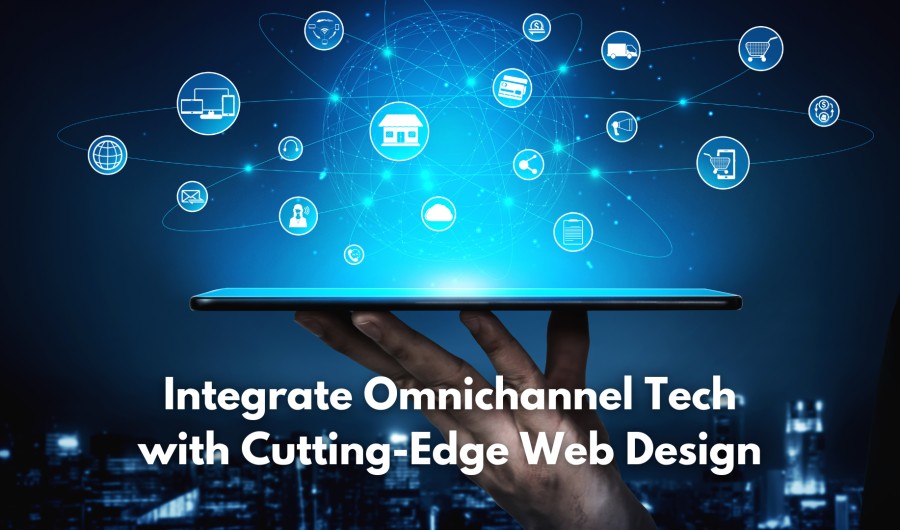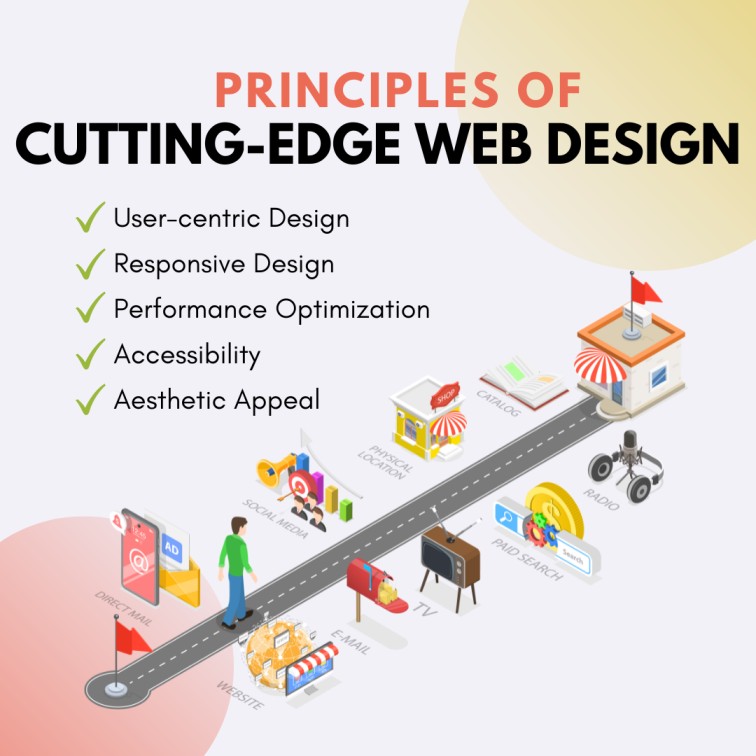
Integrate Omnichannel Tech with Cutting-Edge Web Design
Today’s customers demand device and platform continuity. Nowadays, people engage with brands on conventional as well as new media like desktop sites, mobile apps, social media, and offline stores.
Supporting going in this direction with the help of omnichannel strategy becomes the most important to drive a seamless and integrated chain of experiences across channels. Omnichannel technology and advanced web design are not fads, but necessities for any business organization that aspires to remain relevant and responsive to the needs of the customers.
The Importance of Omnichannel Technology
An omnichannel contact center software enables consistent and integrated communication and interaction across different customer touchpoints. This omnichannel technology takes into account all possible points of contact a customer can make and aligns the experience from one point to the next. When evaluating omnichannel vs multichannel contact center solutions, it’s important to consider how each approach can affect these key benefits. Key benefits of an omnichannel contact center include:
- Customer Insights: Aggregates data from multiple touchpoints to paint a complete picture of customer behavior.
- Personalization: Customizes customer experiences based on customers’ multiple touchpoints, thereby enhancing customers’ interaction.
- Increased Loyalty: When customers are satisfied, it results in more business repetition by the customer.

Principles of Latest in Web Designs
Modern web design has moved from emphasis on almost total usability, adaptability, and aesthetics, to practicability.
- User-Centric Design: Design in a manner that the user remains the focal point by giving prominence to the needs and wants of the user in interface production.
- Responsive Design: Making displays visible on devices like desktops, laptops, tablets, and mobile phones.
- Optimized Page Performance: The website takes minimum time to load and performs well to ensure that attention is kept.
- Accessibility: It should make sure that websites are accessible to differently-abled people and really disabled people.
- Aesthetic Appeal: It should be professional, uncluttered, and aesthetically highly appealing consistent with the brand image.
Omnichannel Tech Integration with Web Design
Omnichannel technology and effective web design mean bringing the best of both into one for the ideal interface.
Unified User Profiles
As far as customer experience is concerned, persistent user profiles are gained by such an omnichannel experience. Such profiles aggregate interactions across various interactions making follow-up and other communication relevant and coherent. For example, one can search for a product in a mobile application and later use the desktop site for purchase—because of such interactions being tracked, organizations can provide relevant recommendations and handovers.
Responsive Design
Omnichannel strategies cannot be implemented without responsive web design. The website has to be able to work fluently on a variety of devices and resolutions. This automatically means the base interactions need to be designed around the constraints of mobile, after which the interaction can be scaled up to the constraints of a desktop. A few of the key strategies for executing responsive design are the use of flexible grids, fluid images, and CSS media queries.
Cross-Platform Consistency
Omnichannel marketing involves delivering a consistent message about a company across many channels. The omnichannel efforts need to be consistent with each other in terms of branding, design, and digital as well as non-digital customer touch points. That means the color, font, or buttons of a mobile app need to be the same as the colors, fonts, and buttons of the website and of the kiosks that are available at the physical stores. It also reinforces brand identity through maintaining coherence in the user experience.
Seamless Transitions
Customers should be clearly moved between devices and mediums. This should ensure that the state and preferences of the user are saved and reproduced by all the channels. This can be obtained by means of Cloud data storage and session persistence among others. A good example would be if a client has selected some items in a mobile application, then these items should be in the basket when the client uses a website on a computer.
Personalization and AI
AI and ML (Machine Learning) work as a backbone in providing targeted and contextual experiences across touch points. AI itself is designed to recommend products, content, or services to users based on their data or behavior. Designers implementing some AI features into web designing means serving customers with highly individualized content that helps it adapt to the user’s necessities and preferences for better engagement and satisfaction.
Omnichannel Analytics
It is a very strong analytical foundation that profiles the customer and their interaction, hence contributing to successful omnichannel management. Web design is supposed to strike a balance between tools and frameworks that assist in monitoring the user’s every interaction across touchpoints. This may help identify strengths and weaknesses of a user flow, a way to point at the pain points and preferences. There exist a great number of tools that collect and analyze this information: Google Analytics, heatmaps, and customer journey mapping.
Integrated Customer Support
Being able to support the customer on all available touchpoints is one of the best approaches to effectively offer omnichannel service. This must include support for live chat, email support, phone support, and social media support, all integrated into the website. Moreover, having a knowledge base or Frequently Asked Questions (FAQs) integrated into the website’s architecture allows the customer to find answers themselves.
Security and Privacy
Another important issue of omnichannel strategies is the security of users’ personal information. Security, therefore, needs to be integrated into the web design to meet the security needs of any information passed through the networks; this entails SSL certificates, integration of secure payment methods, and compliance with data protection laws like the GDPR.
It is also crucial to explain how the data of the customers will be exposed and what kind of policy will be carried out to protect these data, which ensures it becomes trustworthy to the customers of the company.
Best Practices of Implementation
Initiating with Customer Journey
The concept of the customer journey is the key to effective omnichannel design. This map should outline all the possible contact points at which a customer can touch base with the brand to ensure that contact points are easily found and strategies for improvement and consolidation can be created accordingly.
Technology Investment
The general sense is that an omnichannel strategy requires investment in technology and structures, where cloud solutions, AI, and ML instruments, and robust analytics platforms are. The technologies make possible the integration and interconnection of data and interaction across channels.
Team Collaboration
Omnichannel integration is a complex process that encompasses the coordination of many functions such as marketing, IT, design, and customer support. It, therefore, implies that the teams should work in harmony so that each one of them is working towards the realization of organizational goals.
Continuously Optimize
Omnichannel thus is not a single implementation that can be done and be forgotten but a continuous process of fine-tuning. It is, therefore crucial that customer information is reviewed from time to time, new ideas are tried out then strategies are adjusted depending on customer feedback and general performance compared to competitors.
Conclusion
The best web designs combined with omnichannel technology provide organizations the avenue for presenting a frictionless shopping experience for their customers. Therefore, these businesses are better positioned to be able to meet the new age expectations around unified user profiles, responsive design, cross-platform consistency, and incorporation of artificial intelligence and analytics. It is by the use of these practices that the business will create a way to ensure it competes effectively in the world. The world has turned out to have digital and networked realities.
FAQs
How does the Omnichannel technology ensure customer experience?
Omnichannel means that a consistent, positive customer experience should be delivered across all the available channels and touchpoints. Omnichannel communication means that the communication continues across multiple media because the message is pertinent and consistent across various touchpoints.
Why is it important to use responsive web design in the omnichannel strategy?
Responsive web design will ensure that a website is usable on all devices from smartphones, tablets, and desktop computers. This flexibility mirrors the concern that is to be achieved in holding dearly a brand image and serving customers to their best expectations level, regardless of the gadget they are using.
How does the channel contact center software improve customer service?
Also, the contact center software allows the organization to deal with multi-channel customer communications automatically in an integrated mode. It provides customer service representatives with full interaction histories—such as brisk support given to customers well.






